Florida’s Leadership, Media Fall Short on Sea Level Rise

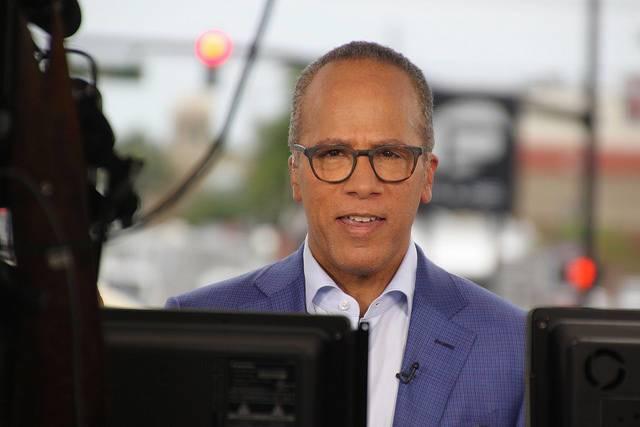
According to the Federal Emergency Management Agency (FEMA), “The top priority of the federal government, as we work together to support authorities in Florida, is protecting the lives and safety of those in affected areas,” as noted in a recent press release.
But some critics have pointed out that Florida’s leadership has done little to prepare the rapidly-growing state for stronger storms brought on by climate change and sea level rise. Meanwhile, the mainstream media has worked 24/7 documenting the damage wrought by Hurricanes Harvey and Irma, without mentioning climate change as a potential factor in what have been two of the most destructive storms in recent memory. By the time the damages are tallied up, they together will become the most expensive natural disasters to hit U.S. soil.
Florida’s governor Rick Scott, for example, has been a constant presence on the news while Irma has heaped destruction on the state of 20 million people. But during his tenure, Scott sidestepped any discussion of climate change by saying, “I am not a scientist” when asked about his views on the topic. Scott’s predecessor, Charlie Crist, a former Republican now serving as a Democratic representative in Congress, set greenhouse gas emissions targets and clean energy goals during his one-term tenure as governor. But under Scott’s watch, those directives have largely been scrapped, while state employees have allegedly been instructed to avoid the use of terms such as “climate change,” “global warming” and “sustainability.”
Meanwhile, climate action has accelerated at the local level across Florida. Miami Beach, for example, already invested in expensive infrastructure to cope with flooding attributed to sea level rise. Counties in southeastern Florida have partnered on the Southeast Florida Regional Climate Change Compact, which seeks to develop adaptation and mitigation strategies in order to prepare the region for everything from volatile weather to rising seas. Estimates suggest that without more proactive planning, much of the $1 trillion of losses in the real estate market nationwide could occur in Florida during this century – and the Sunshine State’s property values could crater sooner than expected as more storms cause additional damage and insurers simply refuse to underwrite policies for homes and condominiums built on Florida's lengthy shores.
But while Scott and Florida’s political leadership face their share of criticism for seeking federal aid while suppressing climate change awareness, the mainstream media as fallen victim to the same issue. Writing for Quartz, Jeremy Deaton offered this assessment:
“Irma’s descent on Florida offers reporters yet another opportunity to connect the dots. The bullet has been fired. Reporters need to show Americans who pulled the trigger.”
Deaton explained that the major broadcasting networks, ABC, NBC and CBS, have been loath to discuss climate change because the issue is seen as polarizing. By covering the science, media outlets risk the fury of many viewers and make advertisers skittish. During the quiet final week of summer last month, NBC and ABC’s nightly news shows each had about 8.5 million viewers – CBS was behind with a still notable 6.2 million people watching. Contrast those numbers with CNN’s one million prime-time viewers or the 2.3 million digital describers to the New York Times.
But while just about every other major news outlet has discussed climate change - including the Washington Post, The Atlantic, NPR and CNN (mocking Rush Limbaugh for fleeing Irma after he bellowed news coverage about Irma was to stoke “panic”) - the major news networks were largely silent. One CBS news shows briefly discussed the problem; but the ABC and NBC completely overlooked the role climate change plays in storm strength.
Millennials may roll their eyes and ask, “Who watches network news, anyway?” but the fact is that older demographics do tune in regularly. And these happen to be the citizens who are often the most influential, either with their pocketbooks or the decisions they make at the polls. Hence avoiding the subject ends up becoming a lost opportunity for political influence. Even if some refuse to believe the science, the evidence suggests these storms are becoming worse – and citizens will have to understand why cities, states and counties will have to spend more on infrastructure in order to continue to enjoy living and working on the country’s coasts.
Image credit: Hermann Wecke/Flickr
Time to Raise Water Rates
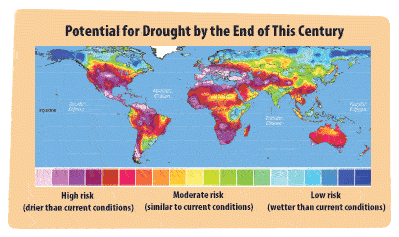

While hurricanes Harvey and Irma deluge floods of biblical proportions, 21.7 million Americans – 11 percent of the country – were living under drought conditions on August 1. And drought conditions are expected to worsen. In fact, in Montana and North Dakota an unprecedented drought is crippling Montana and North Dakota farms and forests.
The impact is dramatic. Not only does drought increase demand from water systems, it decreases snowpack, harming long-term water supplies. It sparks fires as forests and grasslands dry out. It influences the amount of food we grow – and, therefore, food prices.
Still, the issue isn’t simply climate change. Our water systems are under extreme stress from lack of investment to maintain them. It helps explain why the American Society of Civil Engineers rates the country’s drinking water infrastructure a D. It calculates that our aging and underperforming infrastructure serves as a drag on the U.S. economy – costing each American family $3,400 a year.
The right rate is good for the market
Usage rates will continue to be the primary revenue source for water systems. Consequently, utilities should be generating higher rates that cover their costs now and anticipate future water stress. And while it may seem counterintuitive then for utilities to push for water conservation, it helps keep rates lower in the long run. For instance, research shows that residents in Tucson, Ariz., pay water and wastewater rates at least 11.7 percent lower than if they hadn’t conserved water the past 30 years.
Getting customers used to higher water rates should be relatively easy, even if people are getting tired of escalating user fees, in general. The average price of water in the U.S. is about $1.50 for 1,000 gallons. At that price, a gallon costs less than a penny. That compares with bottled water costs that average $1.22 a gallon and electricity at about 12 cents per kilowatt-hour. (The typical U.S. household uses about 908 kWh of electricity monthly.)
Water as a competitive advantage
What’s strange is that only three of the 10 most expensive urban water rate structures are in drought-stricken areas, and they’re in San Diego, Goleta and Monterrey, Calif. On the other hand, Milwaukee, considered by former EPA Administrator Gina McCarthy to be the “freshwater capital of the world,” has accumulated over 200 water technology businesses in the region, academic programs and economic development organizations all dedicated to advancing freshwater technologies. In the process, it has taken a comprehensive cluster-development approach to water.
Water rate structures can enable all of us to enjoy cheap, ample access to clean water while preventing the water hogs from being too piggy. Resources such as Financing Sustainable Water strive to demonstrate how to balance multiple objectives like long-term fiscal health, efficiency, affordability, etc.
Given that resilience includes good governance, decreased risks from climate change, improved public utility service delivery and enhanced economies, it seems smart to put water rate increases in place now to mitigate both climate stress and the persistent and ongoing aging of our infrastructure.
Joyce Coffee is president of Climate Resilience Consulting working with leaders to create strategies that protect and enhance markets and livelihoods through adaptation to climate change.
Image Sources: World Map, Repot Card, Wisconsin
Amazon’s Satellite HQ Could Reap Billions in Tax Breaks


The buzz over Amazon’s announcement of its search for a second headquarters that will eventually equal the size of the company’s Seattle hub has sent cities across North America into a frenzy. And according to David McCabe of Axios, the recent trends of cities cutting deals for companies such as General Electric and Boeing could result in Amazon scoring over $10 billion in reduced tax breaks and other incentives.
Expect the bidding to be fierce, as CNN has already released a list of what the network says are the top eight cities that are the best match for Amazon’s second home. Cities such as San Jose, Dallas and Tulsa are amongst the metro areas salivating at the chance to land 50,000 jobs that on average will pay $100,000 annually plus benefits. Several Midwestern cities, noting the high price of living in Seattle and Silicon Valley, believe more reasonable costs in America’s heartland along with proximity to much of the country’s population together make one of its leading cities a fit for what the company has dubbed “HQ2.”
The numbers alone will tempt cities to offer all kinds of sweetheart deals, whether they include free or cheap land, relocation grants, reduced permitting fees, utility incentives and fee reductions. After all, Amazon has claimed that from 2010 to 2016, its investments in the Seattle region have contributed another $38 billion to the area’s economy – or $1.40 for each $1 the company has invested. The vetting has most likely begun, as the company is ready to review proposals and has made it clear what exactly it seeks in this new headquarters.
The possibility of adding Amazon to a local roster of corporate headquarters is also exciting as Amazon’s completion of its Whole Foods acquisition, along with the lower prices for many products, has boosted foot traffic to those stores by an average of 25 percent. While a spike in curious customers does not necessarily translate into an immediate surge in sales, Amazon is inching closer to mastering one market that has so far eluded it: groceries. Based on the success of Amazon’s online sales of Whole Foods’ private-label 365 products, civic leaders will easily convince themselves that these jobs will not only flock to their cities, but will stay indefinitely.
The big question, however, is whether the massive deals cities have long been offering companies in order to land a marquee brand such as Amazon are worth the investment. Good Jobs First, a policy resource center that promotes corporate and government accountability in economic development, has tracked almost 400 “megadeals” worth at least $75 million – with the largest, of course, Washington State’s 2013 deal that granted Boeing $8.7 billion to keep much of its manufacturing in the Seattle region.
According to Good Jobs First’s researchers, the largest problem with these deals by far has been transparency. “The single most opaque area of economic development spending is corporate income tax credits,” the report’s authors concluded. The cost of sales and property tax exemptions were also difficult to add up, suggesting the financial numbers announced in a city’s and company’s press releases of new headquarters or factories are in the long run usually underestimated.
Some city leaders have already begun to question the wisdom of coughing up billions in incentives when many of these cities already offer what Amazon says is key, including good airport connections, convenient transit, access to talent and quality of life. And despite recent hiccups, Amazon is reaping profits - $14.5 billion last quarter. Kim Walesh, San Jose’s economic development director, wrote in an email to the San Jose Mercury News, “We believe that San Jose is an ideal city for Amazon’s consideration, as we attract world-class tech talent, we have diverse real estate sites available, and an excellent transit infrastructure. And of course, we’ve got the weather.”
Ro Khanna, a U.S. Representative who represents much of the San Jose area, was quite blunt in his assessment of big financial aid packages completed over the years to attract the likes of Amazon. “The challenge is that it shouldn't be done as a race to the bottom where you have massive tax breaks coming at the expense of public schools or public infrastructure when the top corporations already have record profits,” he told Axios.
Cities and states should be concerned about the degree to which they dangle tax credits and other perks when landing companies. Although Wisconsin is basking in its deal landing a $10 billion Foxconn flat panel screen factory, critics of the deal have pointed out that Foxconn has promised similarly sized projects worldwide, only to back out of them at times. Up north in Seattle, the decrease in orders for Boeing’s 777 jetliners has nudged the aviation giant to layoff thousands of workers over the past year, leading some to wonder if the billions thrown at the company was a smart decision.
Image credit: Joe Wolf/Flickr
Sea Salt Increasingly Contaminated by Micro Plastic


Salt has sure gotten complicated over the years. That cylindrical container that was the go-to seasoning option for your parents and grandparents has been often relegated to the lower hard-to-see shelves at most supermarkets. Now the rules concerning salt are far stricter: Kosher is for most steps in cooking; table salt is all right for boiling pasta if no one’s looking; then of course, there are other options such as pink Himalayan salt and countless other “artisanal” options. Save that delicate sea salt for finishing due to its delicate flavor, we’re told.
Well, there is one snag with sea salt, say more researchers: it turns out it may be contaminated by plastic, according to recent analysis on the Guardian.
In a study not yet released, but to which journalist Jessica Glenza was offered a preview, Sherri Mason, a professor of chemistry at State University of New York at Fredonia, worked with University of Minnesota researchers to gauge microplastic levels in various food and beverage products. Included with various brands of beer and drinking water tested were 12 brands of salts, 10 of which were sea salts.
Mason concluded that on average, Americans could be consuming up to 660 particles of plastic annually. But considering that the U.S. Centers for Disease Control (CDC) has found that as many of 90 percent of all Americans are consuming too much sodium, the total number of plastic particles they are ingesting could actually be even higher.
Other studies completed in recent years have confirmed similar results. For example, a paper published this spring in the journal Scientific Reports concluded that fears of plastic contamination in oceans reach far beyond seafood. Researchers analyzed 16 brands of sea salt from four continents and after they dissolved them in water, found that the containers on average contained 72 particles of plastic. Over 90 percent of those articles were either plastics such as polypropylene and polyethylene; the rest were assumed to have a molecular structure similar to plastics. Only one brand, sourced from France, lacked any plastic contamination.
The public health impacts resulting from the amount of plastic particles currently in the global food supply is unknown. The United Nations has declared plastic pollution a threat to human health, but so far, the science is uncertain. No exhaustive studies have been completed that can assess the long-term risks that plastic pollution imposes on humans.
But as one recent study has pointed out, the fear is that if plastic pollution does not recede, there could be risks from chronic exposure as this waste continues to pile up worldwide on land and in our oceans. With just about everyone on the planet exposed no matter how remote their homes may be, the lack of a control group of people with zero microplastics exposure poses a huge challenge to scientists’ understanding of our affinity for plastic could harm our health in the future.
Image credit: Ainars Brūvelis/Wiki Commons
Case Study: How WGL Aligns with Sustainable Development Goals
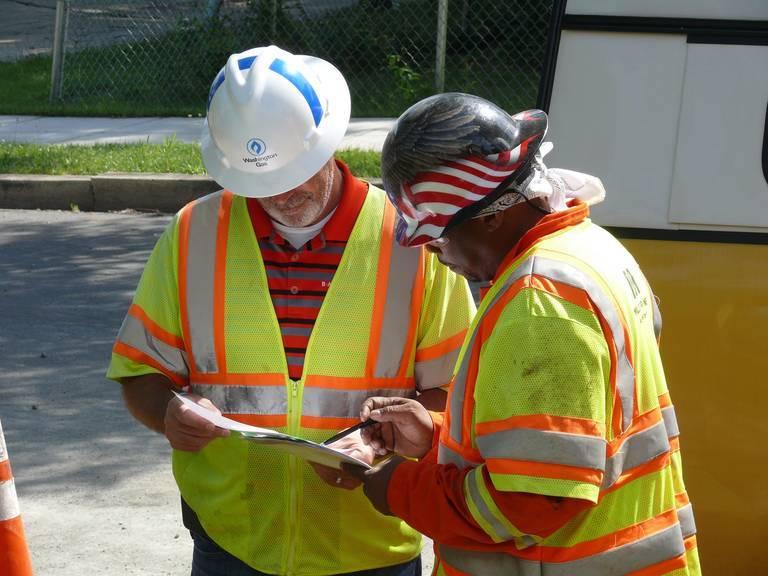

COMMIT!Forum will convene hundreds of corporate social responsibility leaders and CEOs from CR Magazine’s annual 100 Best Corporate Citizens ranking. The event includes a pre-conference workshop on integrated CSR and sustainability reporting from BrownFlynn. Join MGM's Chief Diversity and CR Officer Phyllis James, Terracycle CEO Tom Szaky, Leidos CEO Roger Krone on the corporate response to the opioid epidemic at the 2017 Commit!Forum in Washington DC this October. 3p readers get 20% off with discount code 3P2017CF
Earlier this year, the Climate Disclosure Standards Board, a consortium of businesses and other green organizations announced a new initiative to prompt companies to get behind the G20 Task Force on Climate-related Financial Disclosures. According to the CDSB, the platform will showcase those "forward-thinking businesses" that are willing to show transparency in how they address climate risk and align their operations with their investors' expectations.
More than 100 CEOs of companies ranging from small NGOs to Fortune 500 corporations have already endorsed the initiative, signaling a growing effort through a variety of similarly aimed mechanisms, to ensure sustainable business practices. They not only speak volumes about what many companies see as a mandate for how they should do business but the potential for innovation to resolve some of the world's biggest challenges today.
For energy leaders like Washington Gas and Light (WGL), those efforts are reflected in its support of another mechanism: the United Nations Sustainable Development Goals (SDGs). As John Friedman, sustainability manager for WGL Holdings describes the SDGs, they consist of "seventeen winning strategies” -- common-sense goals that reflect on both businesses and the global community’s sustainability: eradicating poverty, resolving hunger, addressing climate change, ensuring clean water and sanitation is available for all, etc.
“If a business wants to be successful over the long term it must have goals that reflect the need to meet short-term expectations and long-term needs,” explained Friedman. “Sustainable business goals do just that; they incorporate the business plan that generally focuses on meeting the shorter term of direct stakeholders such as customers and regulators with the longer term perspective of what communities want and need, what actions will result in long-term success.”
According to WGL’s 2016 sustainability report, the company strives to meet those goals through its materiality assessment which prioritizes how those goals are addressed by the company.
“Every company has a sense of what matters most, but an independent materiality assessment makes sure that all stakeholders (both internal and external) are heard,” Friedman said. “And the results are often revealing.” In this case, they are the social, economic and environmental issues that have a direct role in addressing those SDGs: job safety, infrastructure investment and environmental compliance, for example.
“[That list] also lets you know if there’s something that perhaps you feel you are managing well that your customers (or suppliers, or the community) may be more concerned about. Or a new issue may be on the horizon that someone within your organization recognizes but it hasn’t really emerged yet,” said Friedman.
Its value chain allows the company to “rate” the impact that certain activities and stakeholders have related to the making, selling and using of the company’s products. Those include things like cybersecurity, greenhouse gas emissions and environmental compliance.
By identifying the materiality factors and value impacts, the company is also able to identify new strategies for to improving its sustainability efforts.
In 2010 WGL began offering carbon offsets to its customers. Its WGES CleanSteps program allows its consumers to match their carbon offsets to their natural gas consumption. Between 2014 and 2015, the program grew more than 40 percent.
“In 2015, through purchases of carbon offsets, WGL Energy customers avoided more than 176 million pounds of carbon dioxide emissions. That’s equivalent to taking almost 17,000 cars off the road for one year or recycling more than 25,000 tons of waste,” said Friedman. He said it is one of several ways that WGL has developed in which consumers can participate in achieving the company’s sustainability goals.
In 2011, the company set two primary sustainability goals to be met by 2020: The first was a 70 percent reduction of its emissions below the 2008 levels. The second was to cap its fugitive emissions by 18 percent below 2008 levels.
In 2015, WGL announced it had exceeded both of those goals. It continues to work toward reducing its carbon emissions below 2008 levels.
Setting sustainability development goals, Friedman said, allows stakeholders – including the board – to see the tasks and the challenges ahead and set a pathway for achieving those goals.
“First of all, sustainability professionals need to be business professionals. We have to explain in the context and using the language of business, if we’re going to resonate and be respected in the c-suite. And we have to understand the perspective of those sitting in those roles."So, we need to know what people are asking in the executive and board meetings. And some of their conversations sound like this; 'What is the next BIG thing?' 'What should we be making or providing NEXT?' 'Where is the market going and how can we meet that need faster, better and more profitably than our competitors?'”
While each company sets its own goals and identifies its own material matrix and values, Friedman said, WGL’s approach helps to align it with a winning business strategy that is both sustainable and supportive of effort to meet the environmental challenges in coming years.
Friedman said that while it seems "typical" to say it's "our people" that are responsible for the successes of WGL's sustainability program, it truly is the staff "[from] the top leadership emphasis and putting sustainability onto our corporate scorecard to the hard working people in the field," that make it possible.
"Everyone has a role to play. When we met our GHG reduction and intensity targets ahead of schedule, we went back and asked people why it mattered to them; and their answers had one thing in common – an awareness and appreciation that those efforts have a direct impact both long and short term on the health and wellbeing of themselves, their families and their friends as well as where they live and work."
Harnessing that awareness is part of making SDGs work for the community, by making sustainability goals personal aspirations that help companies like WGL align for success.
Images courtesy of WGL
Implementing a Successful Public-Private Partnership | Part 3: Determine How to Execute


By Laura Quintana, VP of Corporate Affairs at Cisco
This is the third article in a five-part series on how a company or organization can develop, implement, and sustain successful public-private partnerships (PPP) that achieve large-scale impact. Click to read part one on determining who to work with, and part two on determining when and how long to engage.
How does a company or organization develop and sustain successful public-private partnerships to achieve large-scale impact?
Determine how to execute: The partnership must develop a clear vision, differentiated strategy, and detailed execution plan to drive long-term success. This includes defining outcomes for the PPP that are informed through stakeholder input, establishing an effective governance structure with clearly defined and transparent operating practices, and agreeing upon roles and accountabilities in advance.
In our partnerships we’ve found it helpful to identify and fund a program management lead who is solely responsible for successful program execution. Successful PPPs have both a defined business model (eg. “build, operate, own” like Cisco’s Networking Academy model, or “invest, transfer” like our Community Knowledge Centers (CKCs) model) and a defined solutions model that considers key risks, scalability, replicability, and long-term sustainability.
Developing an exit or transition strategy is also a critical component of early discussions to ensure clear expectations from all parties. Even the best planned partnerships can be disrupted by technology transitions, government changes, or serious funding challenges, making the development of multiple exit or transition strategies necessary.
The Jordan Healthcare Initiative (JHI) was a strategic collaboration between Cisco and the government of Jordan with a clear vision to improve the efficiency of and access to quality healthcare services for people in Jordan, particularly those living in rural and/or underserved areas.
Four JHI projects were clearly defined and implemented in collaboration with multiple partners, including the Jordan Ministry of Health, Jordan Ministry of ICT, and the Royal Medical Services, who each had a defined role. By collaborating closely with the Jordanian government through JHI, Cisco provided our expertise in networking, security, and collaboration technologies to enable telehealth solutions, and established our credentials as a good corporate citizen and reliable business partner.
The journey to the Jordanian capital of Amman is a daunting one for rural patients who require specialty medical care. They must leave the familiar behind to travel hundreds of kilometers to a hospital where they wait in long lines for a consultation.
In 2012, Haifa Abd-El Karim Omoush (pictured at right), a 34-year-old married woman with five children, was suffering from a treatable cardiac condition. Her local physician referred her to a specialist in Amman, but she missed or postponed her appointments because she had no one to care for her children and could not afford to travel to the hospital.
When Haifa learned about a new care-at-a-distance clinic in her own community, she was able to connect with a cardiac specialist in Amman, who immediately diagnosed her and adjusted her treatment plan. The care-at-a-distance clinic helped Haifa’s condition improve and this gave her more time and energy to spend caring for her family.
Connecting urban specialists with rural patients and physicians via technology extends the reach of providers, increases access to healthcare, reduces costs, and empowers patients. Through JHI, our support and solutions enabled the delivery of affordable, quality healthcare services to remote and underserved communities, contributing to the Jordanian government’s goal of improving quality of life for its people and its communities. JHI contributed to the transformation of healthcare delivery in Jordan; and from 2011 to 2015, over 176,000 patients benefited from the initiative.
The telehealth technology solution is still in use at the care-at-a-distance clinic at Al-Mafraq Government Hospital where Haifa received care. Prince Hamzah Hospital in Amman is currently connecting daily with Al-Mafraq Government Hospital and Queen Rania Hospital, a rural hospital in southern Jordan, with an average of 25-30 cardio, dermatology, and nephrology consultations a week.
Has your organization had success in determining how to execute public-private partnerships? Leave us a comment below, tweet at @CiscoCSR and stay tuned for next week’s PPP post on how to ensure long-term sustainability.
Join us September 21, from 10-11 a.m. PT, for a #CiscoChat with PPP thought-leaders Laura Quintana, Vice President, Corporate Affairs at Cisco; Laurence Carter, Senior Director of Public Private Partnerships at the World Bank; Keith Davis, President & CEO of the Camden Dream Center; and Jen Boynton, Editor in Chief at TriplePundit.
Image credit: Cisco
Hurricane Irma Shows Us 2050 is Now
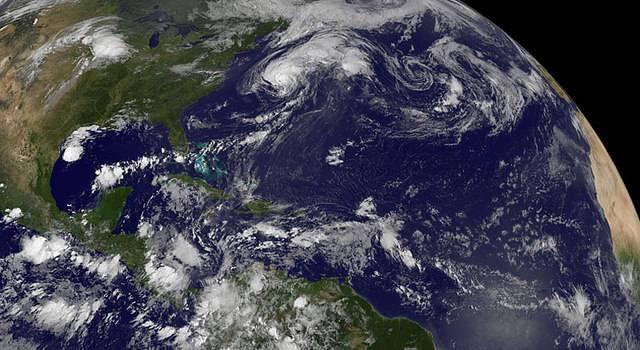

By Paula Caballero
A version of this article was originally published on WRI.org
The reality of daily life is that we try to fix the problems that are staring us in the face. In many ways, the desire for short-term results defines the rhythm of both public and private life. So the idea that decisions today will define where we end up in a couple of decades is difficult to grasp, and may even appear outlandish.
Yet the unprecedented, deadly tropical cyclones in the Caribbean last week foreshadow a perilous tomorrow if we don’t tackle climate change now. We are at an historic crossroads that requires us to factor in the future. Because in a very real sense, 2050 is now.
Our decisions today will define where we end up tomorrow. The idea that unabated, incremental growth is the formula to eradicate poverty will leave us all ultimately poorer and make the pockets of desperate poverty more entrenched. Business as usual will lead to a world that is depleted, more unforgiving, more unequal.
What we do now will determine whether we are able to keep global temperature to 1.5 degrees C or well below 2 degrees C (2.7 degrees or 3.6 degrees F) above preindustrial levels; that’s the point beyond which the most severe consequences of climate change kick in. Short-sighted investments could lock in 20th century ways of doing business and policy that will make achieving this target more expensive and technologically challenging.
In addition to taking paths that emit less greenhouse gases, a 2050 is now mindset is also about protecting the natural resources and systems that will enable the people in tomorrow’s communities – especially rural ones – to make a decent living. Ill-advised decisions on how we use land and manage water could undermine food, water and energy security in the decades to come. Within the next two decades, the world will spend $90 trillion on infrastructure, transforming cities, energy systems and landscapes. We get to decide now whether we spend that $90 trillion on damaging, backward-looking more-of-the-same or shift our energy, transport agriculture and consumption to radically new pathways that can be sustained. This is the only way we can ensure that our midcentury world gives all people a shot at a dignified life while safeguarding the planet’s natural wealth.
The drumbeat
We need to reframe how we understand development and its challenges. The global community has rightly prioritized the eradication of poverty. But unless we make the right decisions today, we may lock out development opportunities and end up perpetuating poverty, or making it worse. By 2050, 2.5 billion people are expected to move to the world’s cities. The growing global middle class will strain natural resources. Entrenched poverty will be increasingly concentrated in areas already experiencing conflict, fragility and resource degradation. Just eight years from now in 2025, 1.8 billion people will live in regions that lack sufficient water. Recognizing that 2050 is now means taking responsibility for avoiding conditions that will yield tomorrow’s poverty and exacerbate inequality within nations and across regions.
The drumbeat of 2050 is now must shape our thinking. We need to learn to frame our problems and solutions in terms of how they will define our world over the coming decades, not whether there will be results for a couple of years. Every cost-benefit analysis should consider long-term consequences.
Change is within reach. The investments, policies and actions we take today can ensure that the natural and built environments will provide decent lives for the world’s people – especially the poorest and most marginalized – between now and 2050, while protecting the planet’s awesome biodiversity.
Sustained, sustainable and inclusive development is only possible if we tackle climate change by making today’s decisions looking to 2050, looking to create the conditions that will safeguard and increase natural and human capital. That is how to get the growth we need.
Paula Caballero is Global Director, Climate Program of the World Resources Institute.
Florida Launches Hotline to Combat Price Gouging


There's been no lack of stories about companies that have stepped up to assist Houston hurricane victims after Harvey made landfall last month. Heartfelt concern and business innovation are both contributing to improving options for those impacted by flooding and damage.
Airbnb waived fees and encouraged landlords to open their rentals for free to people left homeless or stranded by Harvey.
Google has created a new SOS app to help keep Harvey victims out of harm's way as they attempt to find shelter and safety. It's an innovation that may well come into use in Florida this week after Hurricane Irma has finished making landfall in and around the state's most populous cities.
But for now, Florida's Attorney General Pam Bondi sees other risk factors at play, and she has been moving quickly to set up the state's own "SOS" hotline to deal with it.
Complaints of price gouging by transportation and fuel companies who stand to prosper from the fall out of the country's biggest hurricane have been flooding the attorney general's office. Most irksome to the AG's office, perhaps, are those gas stations that tried to raise their fuel prices in anticipation of Irma's wallop. The state used its clout and police escorts to ensure that gasoline tankers could make it to south Florida as quickly as possible in advance of Irma's arrival.
Chevron, which supplies gas stations up and down Florida's coastlines, has come under fire for complaints of price gouging. The company says it does not operate the stations directly and has told the stations sporting its brand that it has no tolerance for price gouging.
Still, Bondi issued a message to Chevron this weekend via Fox News.
"So Chevron, if you’re watching me right now, you need to call us and tell us why your prices are inflated in south Florida,” said Bondi.
For its part, Chevron says it has already made sure that gas stations supplying Chevron and Texaco gas understand they must comply with all laws.
According to the AG's office, it's already received more than 8,000 complaints of price gouging for essentials like water, food and gas.
One caller complained that a Shell gas station in Orlando (home of Disney World) had raised its prices to more than $5 a gallon.
Penalties are stiff under Florida's price-gouging law. Violators can be charged as much as $25,000 for multiple violations in a 24-hour period.
Still, the attorney general's office will have its investigative work cut out for itself in the coming weeks. The price of airline seats also shot up in south Florida as residents and tourists scrambled to leave, with some consumers finding seat prices doubling or tripling.
Snopes, which is known for its ability to dig deeply into controversial (and sometimes fabricated) claims, has already done some of the research work on airlines that allegedly boosted their prices. Snapshots of United Airlines web pages with prices for Miami departures ranging above $2,000 could be found on Snopes' site, with a list of price changes the airline later implemented after consumers complained and in order to "get folks out" of harm's way.
While United and Delta later capped their prices for South Florida departures at $399 (after Delta received scathing rebukes for ticket prices that ranged from $500 to $3,200 last week), JetBlue announced early in the evacuation process that it would be capping all of its Florida departures at $99.
In defending United's pricing, the company's spokesperson Frank Benenati told Snopes that the company was attempting to do the right thing and some of the exhorbitant prices were the result of "glitches" and were later corrected. But he admitted that the recent spate of natural disasters present a "new dynamic" that will challenge airlines "to do the best that they can in the situation that's presented to them."
And with some pro-active airlines being willing to shave off profit in trade for some excellent publicity and good leadership, that new dynamic is liable to get even more challenging for companies that -- right or wrong -- aren't seen by consumers as doing their absolute most to help during a disaster.
Images: Flickr/Florida National Guard; Flickr/John Spade
U.S. and Canada Produce Companies to Trump: Support NAFTA Free Trade

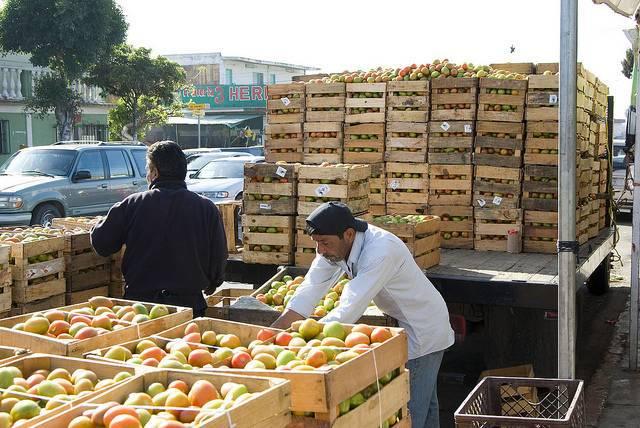
When the negotiations for NAFTA (North American Free Trade Agreement, or Tratado de Libre Comercio de América del Norte, TLCAN, as it is known in Mexico) resume between the U.S., Mexico and Canada in September, a coalition of produce growers will have an important message for the three countries: Fruit and vegetable growers and distributors support North American free trade.
Just importantly, says the newly formed Produce Coalition for NAFTA, it supports a healthy upgrade of regulations and agreements to modernize contracts on all sides.
The coalition, which includes big-name produce growers like Driscolls, Taylor Farms, Mission Farms, and Wonderful Citrus support talks between the three countries, but they also want to ensure that produce sales remain duty-free.
The organization, which represents fruit and vegetable growers across the U.S. and Canada, says it supports the North American Free Trade Agreement because when it was implemented in 1994, it "eliminated tariffs and resulted in more year-round availability for the U.S. consumer."
It also opened doors on all three borders, facilitating growing and transportation agreements that both cut down labor costs and surpassed transportation hurdles when climate issues, like winter weather challenges got in the way. In 2014, more than 99 percent of fresh strawberries imported into the U.S. were shipped in from fields in Mexico.
It has also allowed for stores in California and British Columbia, Canada to keep their tomato shelves stocked during winter periods when Mexico's warmer weather was more hospitable to harvesting warm-weather produce.
And as for avocados, a fruit that has been getting the cautious eye by environmentalists in recent years because of its high demand for water, agreements between Mexico and the U.S. producers have been a "win-win" for all three countries.
“U.S. consumption of avocados has increased by nearly five times since the U.S. border opened to Mexican imports. All growers have benefited from securing long-term partnerships with major foodservice operators who now have enough supply to put avocados on the menu," points out Mission Produce President and CEO Steve Barnard. Canada (at this time, perhaps) does not have the temperate climate to support avocado produce, which are heavily sought after in many parts of the northern country.
Of course, not everyone is sold on NAFTA these days. As TriplePundit has covered in the past, many of the smaller Mexican produce companies have found it hard to leverage a benefit from NAFTA, which largely has gone to support large-scale production and has benefited from cross-border funding from larger companies.
Nor is it reasonable to say that NAFTA's at times acrimonious negotiations hinge on which side of the borders produce growers harvest their products. Trump's assertion that NAFTA represents "huge trade deficits and lost manufacturing jobs" for Americans ignores the fact that many of the companies that harvest those tomatoes, citrus and warm-weather produce in Mexico are U.S.-based and reap the benefit of climate conditions they would not necessarily benefit from within the U.S. (or Canada).
In recent years a small number of U.S. produce companies have come under scrutiny for other problems -- namely, labor disputes. In 2016, workers in Washington State who provide produce for Driscolls through its contracted grower, Sakuma Brothers gained union representation after several years of tense negotiations and complaints. But according to PRI, workers who harvest produce in Mexico directly for Driscolls have yet to see the same labor representation.
Taylor Farms as well, has found itself embroiled in labor disputes spanning accusations ranging from labor standards abuse to failure to permit union activity. A report in 2014 accused the company of taking advantage of undocumented immigrants. In 2016 new complaints surfaced, with unions attempting to unionize through some of its biggest customers: McDonald's and Chipotle and this year, the company came under fire for labor violations.
Other companies in the coalition represent smaller U.S. or Canadian produce growers with longstanding and amicable histories of cross-border relationships. The coalition notes that since NAFTA's implementation in 2014, the total value of trade exports and imports across the three country's borders has grown from $16.7 billion (1993, the year prior to its launch) to $82 billion in 2013.
The coalition is calling for "modernizing NAFTA," although it hasn't clarified how the three countries should accomplish that or how challenges brought up over the years by labor groups about disproportionate pay opportunities in the three countries could be resolved. And judging from President Trump's stance when it comes to the U.S. role in NAFTA, it's not yet clear either, whether labor rights and the role of companies to meet such demands will ultimately have a place at this month's international negotiating table.
Image: Flickr/wisley
Study: Opioids Have Direct Impact on Men’s Participation in U.S. Labor Force


According to a Princeton University economist, the opioid crisis could account for as much as 20 percent of the decline in American men’s participation in the labor force.
The study led by Alan Krueger, who was the Treasury Department’s chief economist during the Obama administration, also found 40 percent of prime-aged men (defined as those aged between 25 and 54) who are not currently working have said chronic pain prevents them from accepting a job for which they would otherwise be qualified.
In his analysis of data that goes back 15 years before the opioid crisis dominated headlines, Krueger found that this nationwide problem preceded the Great Recession – in fact, opioid prescriptions decreased between 2010 and 2015. But Krueger also concluded that the 10 counties with the highest rates of “deaths of despair” (alcohol, accidental overdoses and accidental poisonings) also had a far lower labor participation rate amongst prime aged men: 73 percent compared to the national average of 88 percent.
Furthermore, the convergence of aggressive marketing strategies launched by pharmaceutical companies and wide discrepancies in physician training has contributed to this ongoing health crisis. Krueger cited one Princeton University study that suggested doctors who graduated from the lowest-ranked medical schools gave out prescriptions for opioids at a rate 33 times higher than those who finished medical school at higher-ranked universities.
This study does not call out any of the leading drug companies by name for their complicity in the opioid crisis. Nevertheless, its findings show there are opportunities for the pharmaceutical industry to step up and partner closely with both government agencies and healthcare providers to work on solutions in order to reverse these trends. So far, years of increased opioid prescriptions, abuse and the current awareness have caused far more problems than solutions these drugs were supposed to offer. “Despite the massive rise in opioid prescriptions in the 2000s, there is no evidence that the incidence of pain has declined,” the study concluded. “In fact, the results presented here suggest a small upward trend in the incidence of pain for prime age [men not in the labor force] and unemployed men.”
While more drug companies say they are launching more programs to reverse the lingering effects of the opioid crisis, the reality has been that most companies have been able to evade responsibility for their role in exacerbating this public health problem.
Krueger’s analysis calls for far more aggressive efforts in order to tackle the opioid crisis so more men at their peak years of productivity can work full-time again and prevent the labor participation rate from falling even further. Better pain management tactics, made possible by expanded health insurance coverage and more preventable care, says Krueger, could also help staunch this stubborn problem.
Other studies have linked the opioid epidemic and the decrease of participation in the workforce. Earlier this year, a National Bureau of Economic Research (NBER) study concluded that as a county’s unemployment rate increases one percentage point, emergency room visits connected to opioid abuse rise 7 percent while the death rate related to this crisis climbs 3.6 percent. Even the financial industry has become more concerned about the impact this crisis has had on the economy: Goldman Sachs has concluded that despite an overall strong jobs market, the opioid epidemic is sidelining far too many American workers.
Nevertheless, the personal toll the opioid crisis has exacted on society needs to be addressed before these citizens affected by this epidemic can become productive members of the workforce again. The statistics alone scream for a rethink in how society approaches drug abuse.
A generation ago, deaths by HIV, car accidents and guns far outpaced deaths from drug overdoses. But as the New York Times has shown, deaths from overdoses have accelerated rapidly since the turn of the century and have soared over 50,000 annually. Businesses, and not just those affiliated with the healthcare sector, will have to take the lead and help reverse the despair that has torn apart many communities. After all, municipalities are overwhelmed by the problem and the federal government has all but refused to address the crisis.
Image credit: KOMUnews/Flickr